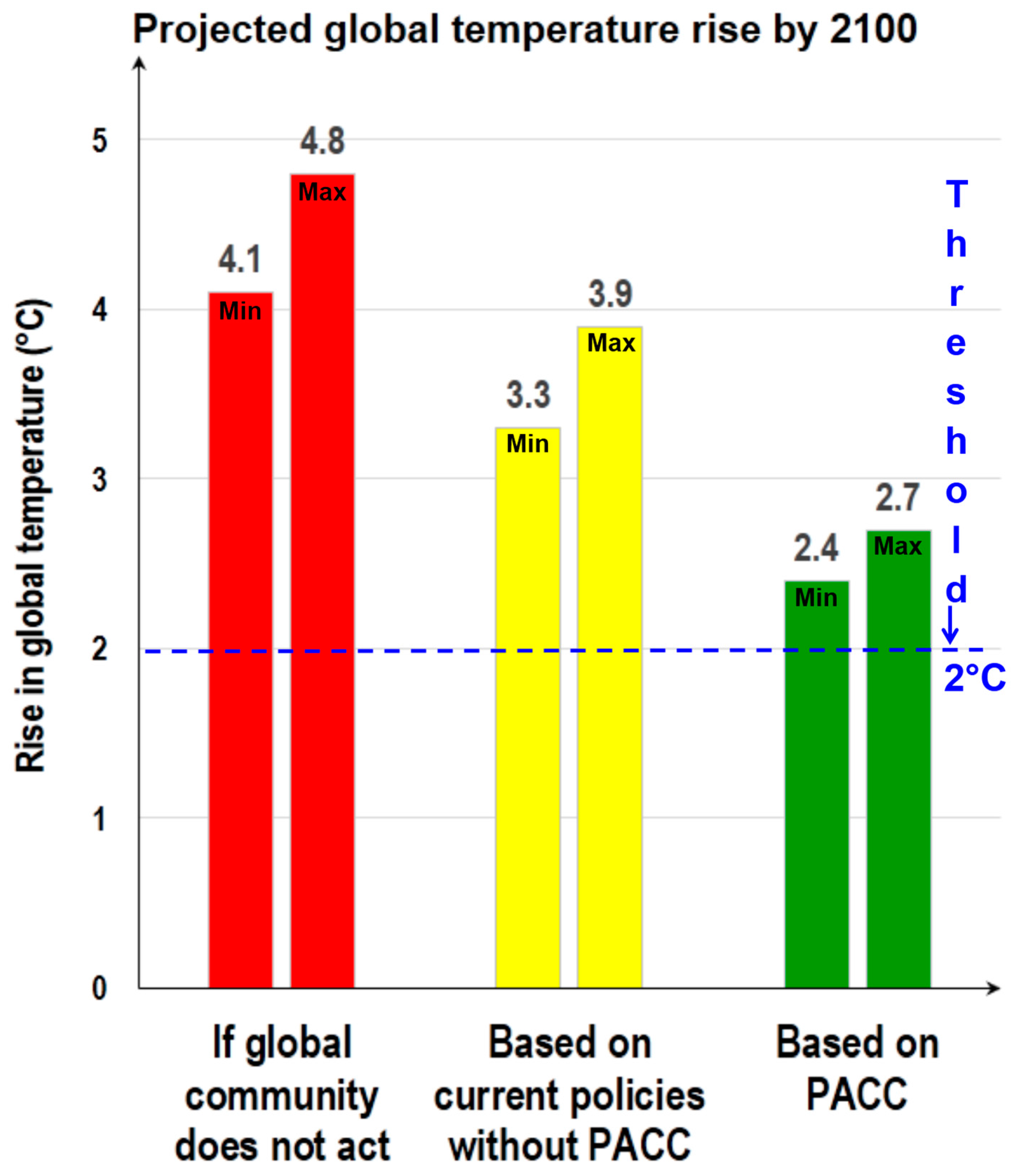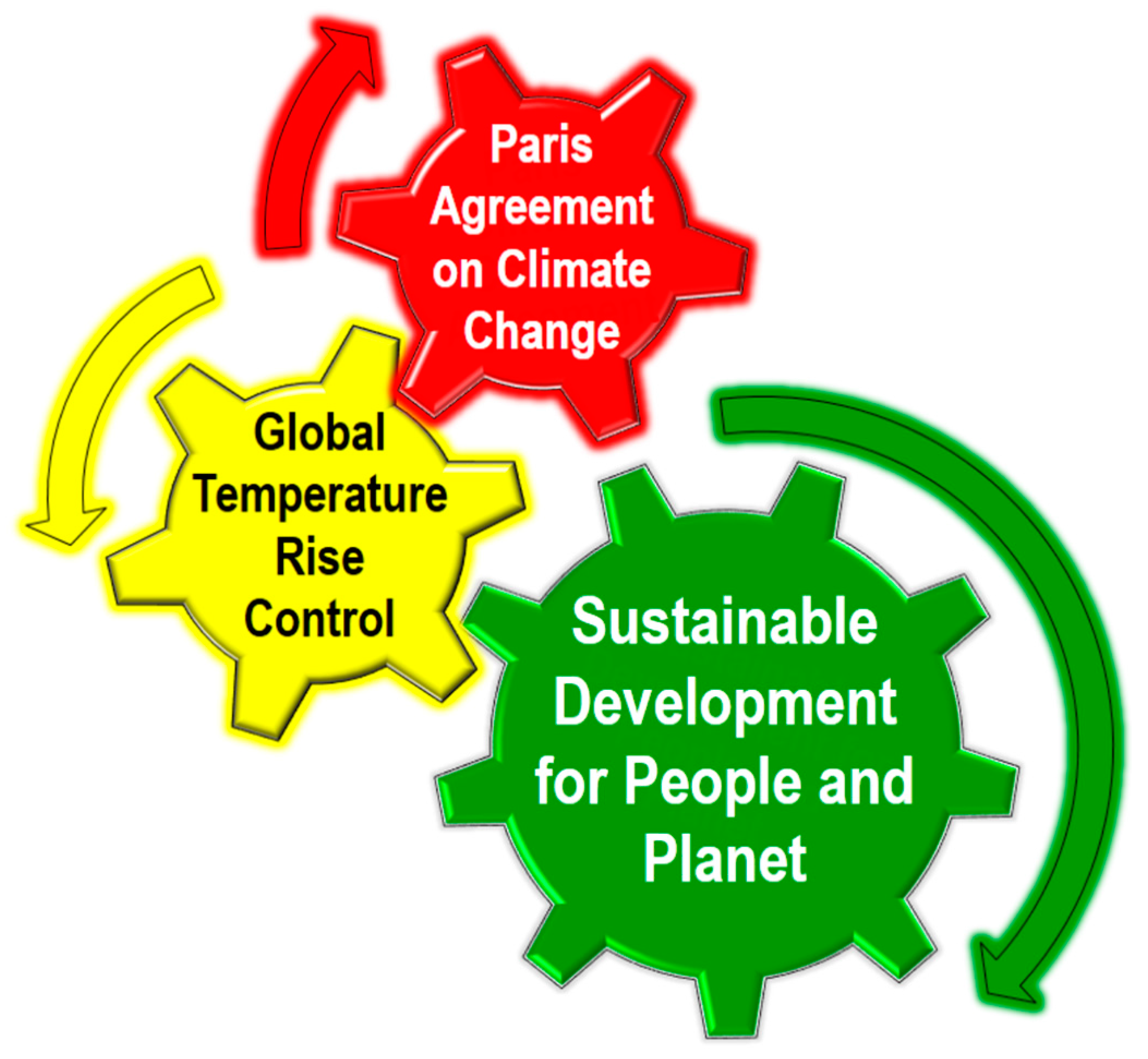Paris Agreement on Climate Change: A Booster to Enable Sustainable Global Development and Beyond
Abstract
:Conflicts of Interest
References
- United Nations–17 Goals to Transform Our World (Press Releases). Available online: http://www.un.org/sustainabledevelopment/news/press-releases/ (accessed on 5 November 2016).
- Snyder, C.W. Evolution of global temperature over the past two million years. Nature 2016, 538, 226–228. [Google Scholar] [CrossRef] [PubMed]
- Sala, O.E.; Chapin, F.S., III; Armesto, J.J.; Berlow, E.; Bloomfield, J.; Dirzo, R.; Huber-Sanwald, E.; Huenneke, L.F.; Jackson, R.B.; Kinzig, A.; et al. Global biodiversity scenarios for the year 2100. Science 2000, 287, 1770–1174. [Google Scholar] [CrossRef] [PubMed]
- Church, J.A.; Clark, P.U.; Cazenave, A.; Gregory, J.M.; Jevrejeva, S.; Levermann, A.; Merrifield, M.A.; Milne, G.A.; Nerem, R.S.; Nunn, P.D.; et al. Sea-level rise by 2100. Science 2013, 342, 1445. [Google Scholar] [CrossRef] [PubMed]
- Sohl, T.L.; Sayler, K.L.; Bouchard, M.A.; Reker, R.R.; Friesz, A.M.; Bennett, S.L.; Sleeter, B.M.; Sleeter, R.R.; Wilson, T.; Soulard, C.; et al. Spatially explicit modeling of 1992–2100 land cover and forest stand age for the conterminous United States. Ecol. Appl. 2014, 24, 1015–1036. [Google Scholar] [CrossRef] [PubMed]
- Hall, J.W.; Sayers, P.B.; Walkden, M.J.; Panzeri, M. Impacts of climate change on coastal flood risk in England and Wales: 2030–2100. Philos. Trans. A Math. Phys. Eng. Sci. 2006, 364, 1027–1049. [Google Scholar] [CrossRef] [PubMed]
- Anderson, J.; Bogart, N.; Clarke, A.; Nelson, L.; Warren, B.; Jespersen, L. Food safety management in the global food supply chain. Perspect. Public Health 2014, 134, 181. [Google Scholar] [PubMed]
- Porter, S.D.; Reay, D.S.; Higgins, P.; Bomberg, E. A half-century of production-phase greenhouse gas emissions from food loss & waste in the global food supply chain. Sci. Total Environ. 2016, 571, 721–729. [Google Scholar] [PubMed]
- Climate Action Tracker. Available online: http://climateactiontracker.org/global.html (accessed on 3 November 2016).


© 2016 by the author; licensee MDPI, Basel, Switzerland. This article is an open access article distributed under the terms and conditions of the Creative Commons Attribution (CC-BY) license (http://creativecommons.org/licenses/by/4.0/).
Share and Cite
Bhore, S.J. Paris Agreement on Climate Change: A Booster to Enable Sustainable Global Development and Beyond. Int. J. Environ. Res. Public Health 2016, 13, 1134. https://doi.org/10.3390/ijerph13111134
Bhore SJ. Paris Agreement on Climate Change: A Booster to Enable Sustainable Global Development and Beyond. International Journal of Environmental Research and Public Health. 2016; 13(11):1134. https://doi.org/10.3390/ijerph13111134
Chicago/Turabian StyleBhore, Subhash Janardhan. 2016. "Paris Agreement on Climate Change: A Booster to Enable Sustainable Global Development and Beyond" International Journal of Environmental Research and Public Health 13, no. 11: 1134. https://doi.org/10.3390/ijerph13111134
APA StyleBhore, S. J. (2016). Paris Agreement on Climate Change: A Booster to Enable Sustainable Global Development and Beyond. International Journal of Environmental Research and Public Health, 13(11), 1134. https://doi.org/10.3390/ijerph13111134




